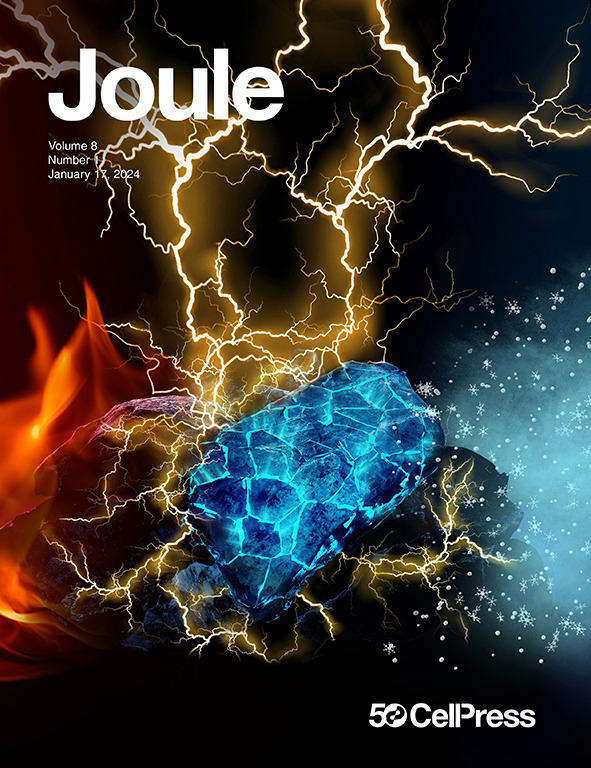Are metal-halide perovskite solar cells really radiation tolerant?
IF 38.6
1区 材料科学
Q1 CHEMISTRY, PHYSICAL
引用次数: 0
Abstract
Recent evidence of radiation tolerance and self-healing in metal-halide perovskites has spurred interest in their potential as a scalable and low-cost space power technology for the emerging commercial space economy. In this perspective, we challenge the prevailing narrative around this radiation tolerance, suggesting that perovskites may not be as tolerant as currently perceived and that further work is needed to fully understand radiation-matter interactions in these systems. We suggest that a unique combination of lattice softness, strong electron-phonon coupling, and low intrinsic thermal conductivity places halide perovskites in a category of unconventional semiconductors, enabling them to self-heal from radiation-induced displacement damage, unexpected for structurally vulnerable materials. Nevertheless, we postulate that the tendency for halide perovskites to self-heal might also be their Achilles’ heel, making them vulnerable to ionizing radiation that involves sharp localized phonon-mediated temperature spikes and decomposition at higher radiation fluence. Calling attention to this unusual characteristic, we attempt to spur the development of theoretical and experimental insights with the goal of realizing tailored device architectures that can withstand coupled extremes where radiation, thermal cycling, vacuum, and air mass 0 (AM0) illumination join forces and inflict catastrophic nonlinear damage.


金属卤化物钙钛矿太阳能电池真的耐辐射吗?
最近有证据表明,金属卤化物钙钛矿具有辐射耐受性和自我修复能力,这激发了人们对其作为新兴商业空间经济中可扩展和低成本空间动力技术的潜力的兴趣。从这个角度来看,我们挑战了围绕这种辐射耐受性的主流叙述,表明钙钛矿可能不像目前所认为的那样耐受性,需要进一步的工作来充分了解这些系统中的辐射-物质相互作用。我们认为,晶格柔软性、强电子-声子耦合和低固有热导率的独特组合使卤化物钙钛矿成为非常规半导体的一类,使它们能够从辐射引起的位移损伤中自我修复,这对于结构脆弱的材料来说是意想不到的。然而,我们假设卤化物钙钛矿的自愈倾向也可能是它们的致命弱点,使它们容易受到电离辐射的影响,电离辐射涉及尖锐的局部声子介导的温度峰值和更高辐射通量下的分解。为了引起人们对这一不寻常特征的关注,我们试图促进理论和实验见解的发展,目标是实现定制的器件架构,该架构可以承受辐射、热循环、真空和空气质量0 (AM0)照明联合作用并造成灾难性非线性损伤的耦合极端。
本文章由计算机程序翻译,如有差异,请以英文原文为准。
求助全文
约1分钟内获得全文
求助全文
来源期刊

Joule
Energy-General Energy
CiteScore
53.10
自引率
2.00%
发文量
198
期刊介绍:
Joule is a sister journal to Cell that focuses on research, analysis, and ideas related to sustainable energy. It aims to address the global challenge of the need for more sustainable energy solutions. Joule is a forward-looking journal that bridges disciplines and scales of energy research. It connects researchers and analysts working on scientific, technical, economic, policy, and social challenges related to sustainable energy. The journal covers a wide range of energy research, from fundamental laboratory studies on energy conversion and storage to global-level analysis. Joule aims to highlight and amplify the implications, challenges, and opportunities of novel energy research for different groups in the field.
 求助内容:
求助内容: 应助结果提醒方式:
应助结果提醒方式:


